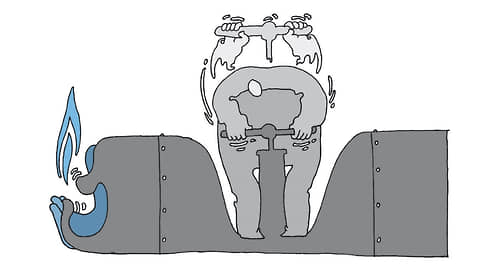Gas production in the Russian Federation increased in November due to exports
[ad_1]

Gas production in the Russian Federation is growing in annual terms for the fourth month in a row, but only due to the low base effect. In November, the Russian Federation produced almost 60 billion cubic meters of gas, which is 6.4% more than a year earlier. The main growth occurred due to increased production by Gazprom and the Sakhalin-1 PSA project. In January-November, production decreased by 3%, to 594.5 billion cubic meters, and may be the lowest since 2016 by the end of the year.
Gas production in the Russian Federation in November increased by approximately 6.4% compared to the same period last year, to 59.97 billion cubic meters, sources familiar with the Ministry of Energy statistics told Kommersant (data for 2023 include gas flared in flares, for 2022 – without). In January-November, 594.5 billion cubic meters of gas were produced in the Russian Federation, which is 3% less than a year earlier.
Production from “other producers,” largely reflecting Gazprom’s production, rose 6.5% in November to 38.57 billion cubic meters year-on-year. Over 11 months, production decreased by 9.6%, to 366 billion cubic meters.
Gazprom practically lost its market in Europe after the outbreak of hostilities in Ukraine, which affected the company’s production rates. Despite military actions, supplies of Russian gas through the territory of Ukraine continue, but in a truncated volume; exports to the continent also occur through the Turkish Stream. Instead of Europe, Gazprom is seeking to increase supplies to China, as well as to Kazakhstan and Uzbekistan, where supplies started in October. The head of the Ministry of Energy Nikolai Shulginov reported on December 20 that in 2024, according to his forecasts, gas production could increase due to increased supplies to Central Asia.
Gazprom increased production due to growing demand for gas in the EU and increased gas supplies to China, says Sergei Kondratyev from the Institute of Energy and Finance. Thus, gas transportation to the EU in November increased by 16% year-on-year, to 2.3 billion cubic meters, due to an increase in pumping through the Turkish Stream to 1.15 billion cubic meters (plus 42% year-on-year). The company’s supplies to the domestic market decreased in November due to a warmer autumn.
NOVATEK, the largest independent gas producer in the Russian Federation, in November left production at last year’s level – 6.83 billion cubic meters. In January-November, the company produced 72 billion cubic meters of gas, or 2% less than a year earlier. Statistics continue to be affected by long-term repairs on Yamal LNG liquefaction lines.
“Rosneft”, which is catching up with NOVATEK in terms of gas production after the expansion of Rospan and the Kharampur field, produced 6.5 billion cubic meters of gas in November, which is 17% more than last year. In January-November, the company’s production increased by 50%, to 71 billion cubic meters.
Gas production from other oil companies continues to decline.
So, Gazprom Neft, controlled by Gazprom, reduced production in November by 5%, to 2.5 billion cubic meters, over 11 months – by 11.6%, to 26.7 billion cubic meters. Because of the OPEC+ deal LUKOIL reduced the rate of gas production by 3.7% compared to the level of November last year, to 1.5 billion cubic meters, over 11 months – by 2%, to 16.47 billion cubic meters. Production “Surgutneftegaz” in November it fell immediately by 17%, to 546.7 million cubic meters; in January-November the company reduced gas production by 14.3%, to 6.5 billion cubic meters.
Production at the Sakhalin-1 PSA project in November increased due to the restoration of associated petroleum gas production, amounting to 922.8 million cubic meters, over 11 months – 8.8 billion cubic meters. At the Sakhalin-2 project, gas production in November amounted to 1.5 billion cubic meters, in January-November – 15 billion cubic meters.
In November, positive dynamics in gas production continued, volumes grew for the fourth month in a row, but the main driver remains the effect of last year’s low base, notes Sergei Kondratyev. But, he adds, despite the growth in November, absolute values remain near multi-year lows; the result of November 2023 is the worst result over the last decade, with the exception of 2022.
[ad_2]
Source link





